Introduction
According to the latest projections the Czech economy continues to stagnate, the growth could occur until the middle of next year. Like most European countries recovery from the effects of the economic crisis in 2007-2009 still continues. Today we are unable to fully appreciate the size, depth and novelty of this crisis, which was mainly characterized by its high innovativeness and adaptability. It has satisfied all properties which, according to the theory and science, have a modern and dynamic enterprise. In the terms of business, operating in a new environment, economy and environment in a modern and wealthy consumer society of the period 2007-2009 showed an entirely new perspective on many issues, especially on issues of risk management and the hedge against the risks. (Kislingerová, 2010) In today’s global world of increasing competition not only from traditional developed, but also developing countries is not only the business sector but also the public strongly motivated to innovate and improve its products and services. Competition leads to the rapid introduction of new product, supplies comprehensively meeting the needs of customers, with the risk of significant fines for non-compliance with the terms and endpoints. In the increasingly rapid changes in the environment we must be able to respond flexibly to identify possible potential risks and the uncertainties, and also be able to actively manage. (Korecký , 2011) . The system of risk management, its principles and guidelines are generally embedded in the standard of ISO 31000 in 2010. It describes a systematic process of identifying, analyzing, and effective treatment of risk and can be applied in any organization in many areas and on many levels. (Korecký, 2011) One of the most important preconditions for successful business, as well as for the activities of state agencies and local governments, is a risk management integration of risk management into enterprise management, and so, it is perceived as an essential component of the competitiveness of organizations.
The concept of risk has passed a certain historical development. A brief summary of the development of the Pacific states which is used to trace the roots of the word risk in Arabic, Latin and Greek. The Arabic word meaning RISQ was accidental and favorable outcome. Latin riscum was related to the risk of shipping caused by coral reefs that sailors had to overcome. The Greek derivation of the Arabic word RISQ has been associated with both negative and positive events and results. The later development of the concept of risk in the 17th to 20th century vacillated between its only connection with negative results (Tichý, 2006). According to the present interpretation, the risk generally means the risk of loss damage, loss or destruction of, or failure in business. The only generally accepted definition of risk does not exist. Economic and technical literature defines risk as the probable loss of the right holder, which is expressed in monetary or other units. (Tichý, 2006). One of the many problems of today´s risks is that for now we cannot arrange hazard risks in a universal system into categories or classes. We are able to do so only in narrow circles, for example, in one field or one organization. (Hnilica, 2009). From the available literature source we chose the following breakdown of risk:
- financial risk – the risk usually measurable
- intangible risk – related to mental activity or inactivity, we may see him also the term of psychological risks
- speculative risk – understand the risks to which it is exposed to several projects of a particular class, this risk cannot be controlled by diversifying
- unsystematic risk – applies only to one project and the other is independent, it can be transferred to other projects and thus achieve the reduction of portfolio risk, for the investigated project
- insurable and uninsurable risk – this risk applies where the consideration in terms of transfer of risk to third parties
- strategic risk – applies in strategic decision ” what to do”
- operational risk – is an element of operational decision-making “how to do it “
- estimated risk – the risk that the risk cannot be described numerically and it can only be defined as existing or non-existent. (Smejkal, 2010) , (Tichý, 2006) , (Zuzák, 2009)
Risk Management (Risk Management) is an area of management, focusing on analysis and risk reduction, using different methods and techniques of risk prevention that eliminates existing or future reveal the factors that increase the risk. Risk management is a systematic, repetitive set of interrelated activities, which aim to manage the potential risks thus reduce the likelihood of their occurrence or reduce their impact. The purpose of risk management is to avoid any problems or negative phenomena, avoid crisis management and avoid problems. Risk management consists of four interrelated phases: namely risk analysis, risk assessment managing risk (or mitigation) and monitoring of risks. (Merna, 2007) (Hopkin, 2012) as key in the risk analysis we see that risk analysis is a team activity. The program team must be competent, must know the methods used to analyze the risks, and must have relevant competence. Only then can this activity be successful. With the determination of the level of severity and probability of occurrence of each risk you evaluate the risk of pre-defined team. The following crisis scenarios creation and monitoring the success of the introduction of instruments for elimination and risk management. Individual risk management activities are of course, its procedures, methods and techniques. But they are not subject to contribution, so we gave them only marginally.
Methodology and research objective
The aim of the research was to determine the level of awareness and the use of risk management in organizations of the private sector in the Czech Republic and identify the most common risks facing these organizations Furthermore, two -formulated research questions:
- Is a risk considered to be a factor for the competitiveness of the management company? (The authors believe that the skills to define manage and control risks are fundamental aspects of competitiveness. Then it can be defined as the ability to deliver competitive advantage and sell a product at a profit. This fact is therefore influenced by many factors from the market and competitive environment, activity purchases production, sales to basic management skills. Then there are potential risks in each of these areas. The relationship between risk management and the competitiveness perceived by managers is represented in a chart 1)
- Is risk management used predominantly by large organizations?
During the months of October to December 2013 by means of an electronic questionnaire was sent to 230 businesses. Respondents were selected from all sectors of the national economy of the Czech economy. The number of returned questionnaires was seventy, corresponding to a return of 30.4 %. The questionnaire included five closed questions.
The final section of the questionnaire was devoted to information about the company, number of employees, property and business.
Research Results
For the breakdown of holdings by size, we have chosen the analyzed by Commission Regulation EC no. 800/2008, a specific criterion in number of employees. Breakdown organization of returned questionnaires is as follows:
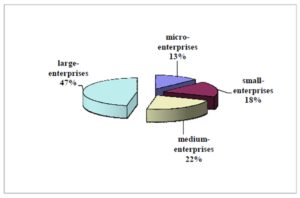
Figure 1: Breakdown by size of research sample (Author’s elaboration)
Other characteristics of the examined sample was information that it is a purely Czech or European and global organization. Organizations with majority of ownership are considered to be Czech organizations, and organizations with majority of foreign ownership are considered to be transnational. We still closely divide the Europe and the world.
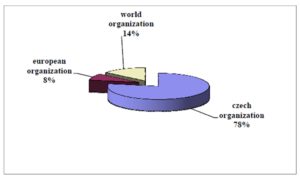
Figure 2: Breakdown of surveyed companies by share capital (Author’s elaboration)
Last of the characteristics for research purposes was the business in which the organization operates. On the selection of these sectors of the economy: industry, construction, trade and services, and transportation. It is assumed that more use will have risk management in areas where a higher probability of risk types, such as: manufacturing, technical, environmental, chemical etc. Of the total number of returned questionnaires was 54% of responses from managers working in the industry, the second largest group with representation of 22% were trade and services. Representation of companies in various business areas presented in the following figure.
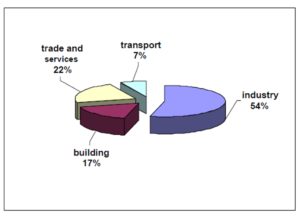
Figure 3: Representation in the examined sample business sectors
(Author’s elaboration)
Asked whether the institution clashed with the concept of risk management, 59 managers responded positively. The remaining 11 risk management still not met. This was assessed as very positive because more than 84% of the total of the returned questionnaires knows the concept of risk management, of which 60% are large enterprises and 24% of medium businesses. Micro and small enterprises with the concept of risk management have not been yet.
Since one of the research questions was determined as assessing whether implemented Risk Management in the organization is part of the factors of competitiveness, we are interested in the opinion of managers’ surveyed companies. They had to determine the importance scale low-mid and high their position on this argument. The following table shows the response of enterprises broken down by size.
Table 1: – The importance of risk management for business competitiveness
(Author’s elaboration)
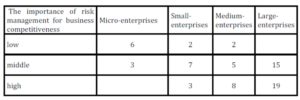
Of the total number of returned questionnaires, 47% of managers attach high importance of risk management for business competitiveness. Here we can see the fact that particular medium and large companies are aware of the importance of risk management as a tool for competitiveness. Micro-enterprises, as is evident from the previous question, is the notion of risk management encountered, and therefore does not find it or its importance to gain a competitive advantage.
The question focused on the degree of implementation of risk management aimed to determine satisfaction of managers with the current state of risk management in their organization. Micro and small businesses are aware of the risk management process. Of medium and large enterprises was given no reply as low, indicating the fact that this type of organization in some form of risk management used.
Table 2: – The rate of implementation of risk management in the surveyed enterprises (Author’s elaboration)

The research was focused on the business sector and its associated risks. In the literature, there is no unified categorization of risks associated with business activities. Hnilica defines business risk as the risk of positive and negative side. (Hnilica, 2009). Engemann understands the business risk as the sum of all factors that significantly influence decisions or managers have a direct impact on business. (Engemann, 2012). In general we can say that for business risks can be considered all elements of direct and indirect neighborhood business. For research purposes, we chose breakdown risk by Smejkal at risk:
- Natural disasters and catastrophes
- Human factor , management
- Risk of insufficient demand
- Investment risk (Smejkal, 2010)
Managers should select all the risks relating to their organization. Most represented in the responses of risk managers, the risks of natural disasters and accidents, negative profit and environmental risk. This can be affected by the fact that almost 50% of companies that have sent back the questionnaire are moving precisely in the industry.
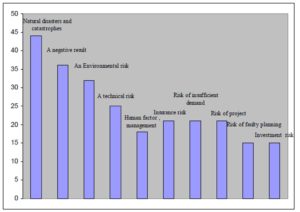
Figure 4: Most Abundant risk for a sample of Business (Author’s elaboration)
Conclusion
Theory and practice of contemporary management thinking and behavior with increasing intensity, deals with vital prerequisites of business survival and prosperity in terms of permanent and critical changes in socio -economic and political environments. As a result of globalization, thus ” shortening ” distances on the Earth, reducing the size of borders between states, linking economic confessed financial organizations, investment in foreign shares or trading with overseas destinations – I, reduces production costs and services between the continents . This global interconnectivity but also has its pitfalls, 2007-2009, which resulted in the “global economic crisis “, which was a response to the crisis of major economies and their transmission to the following branches across state borders. Ability to successfully work in conditions of risk is now becoming a feature of modern manager and risk management process standard for management pitfalls and negative impacts on the business.
The aim of the survey which is a platform for the emergence of contribution was to determine the degree of awareness of risk management and its impact on the competitiveness of the company in the companies of Czech economy during the unwinding of the global economic crisis. Its authors were also two claims and risk management whether it actually becomes an essential factor in business competitiveness and whether it is implemented only in large organizations because 47 % of respondents said that the importance of risk management to business competitiveness attaches high importance, the authors first claim can be stated as confirmed. In the results of the survey also find the answer to the second question. The term risk management was met mostly by medium and large enterprises, small companies met this term less and micro-enterprises have not met at all. Since micro and small enterprises play an important role in business development of the Czech Republic and strengthen the competitiveness of each region, the authors determined that more research goal to make an analysis of the current risk management in the enterprise segment identify barriers to the use of risk management and create a simple model of implementation risk management to micro and small businesses.
The research results will be utilized both in theoretical and practical terms. In the theoretical terms the results will be implemented to the publication Crisis management by the Faculty, which prepares to issue that in this academic year and take into lectures on the subject of Enterprise risk management. In practical terms, the results of the research will become the platform for further research.
References
- Engenmann, J. (2012) Business continuity and risk management : essentials of organizational resilience. Rothstein Brookfield.
- Hnilica, J. (2009) Aplikovaná analýza rizika. GradaPublishing, a.s. Praha
- Hopkin, P. (2012) Fundamentals of risk management : understandingevaluating and implementingeffective risk management. KoganPage. London
- Kislingerová, E. (2012) Podnik v časech krize.GradaPublishing, a.s. Praha
- Korecký, M. (2011) Management rizik projektů. GradaPublishing, a.s. Praha
- Smejkal, K., Rais, V. (2010) Řízení rizik ve firmách a jiných organizacích. GradaPublishing, a.s. Praha
- Tichý, M. (2006). Ovládání rizika: analýza a management.H.Beck. Praha
- Zuzák, M. (2009) Krizové řízení podniku. GradaPublishing, a.s. Praha








